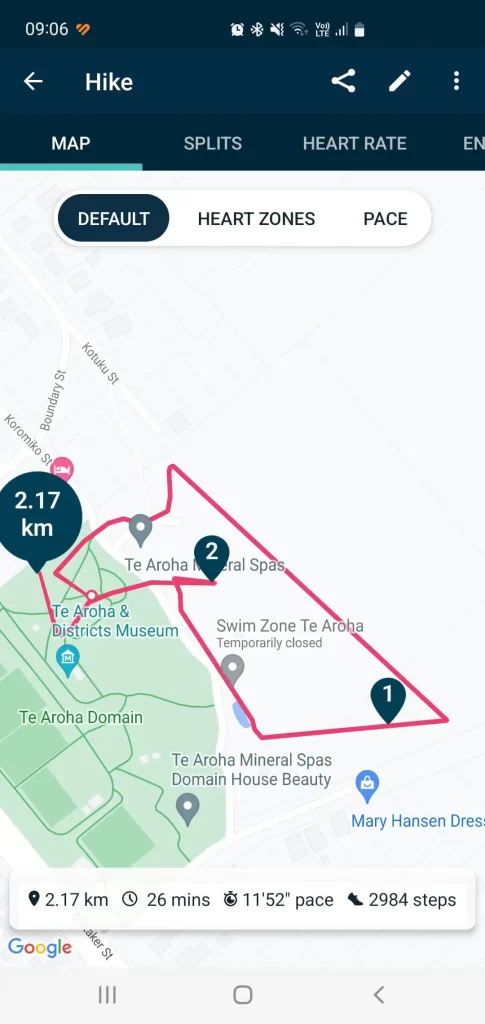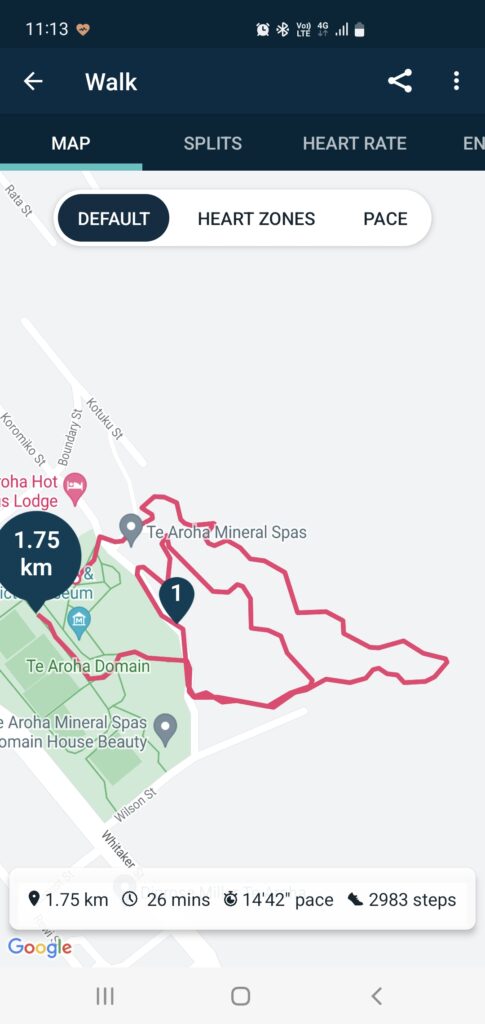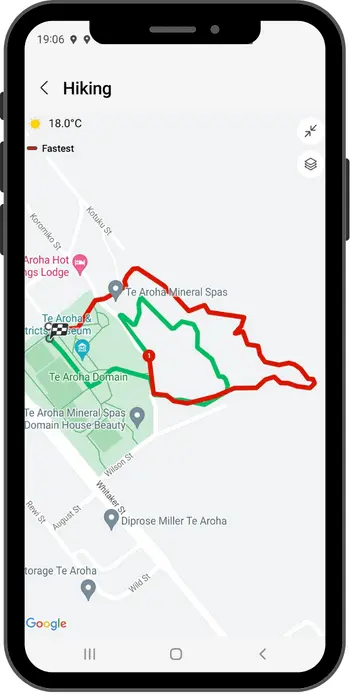Fitbit Charge 5 Vs Fitbit Inspire 3 : Which Will You Choose?
When it comes to direct comparisons between two fitness trackers, I have a firm belief that one does not mean it’s better than the other. A fitness tracker should align with your personal goals and your daily day to day life. That’s what I would for you to remember before you decide on which one to buy. Take it with a grain of salt! please, and if there are features that will benefit you, then that to me is a sensible buy.
When making a judgement call between the two fitness trackers, I was surprised to find how much they varied. Despite the Fitbit Inspire 3 being towards the bottom of the Fitbit tracker ladder, this device is a great choice. It is extremely dependable and robust, I have yet to find any downsides to this model.
With that said here is the Final result of the Fitbit Inspire 3 vs Fitbit Charge 5. I will only compare 4 main aspects of what a fitness trackers are capable of.
| Fitness Tracker Feature | Winner |
| Special Features | Fitbit Inspire 3 |
| Health Features | Fitbit Charge 5 |
| Activity Features | Fitbit Inspire 3 |
| Battery Life | Fitbit Inspire 3 |
As you can see the winner is the Fitbit Inspire 3 with a score of 3-1 in it’s favour. In this article I will go into detail on each sector.
Smart Features : Winner Fitbit Inspire 3
Smart features are an extremely important factor when looking at a fitness tracker. As far as the Fitbit smart features go, it’s very generic. What you will find is that with a more high end Fitbit watch like the Sense 2, the smart features are the completely the same. Here is a run down of those feature
- NFC
- Always on Display (AOD)
- Find your phone
- Quick messaging
- Auto replies
From a user experience point of view the Charge 5 screen is a little bit larger and you could view the messages more clearer. The message doesnt look like its mushed together like it does on the Inspire 3, but after a while you get used to it and you dont notice any difference.
As for NFC, didn’t have any issues getting this feature to work. I have the Australasian model so I know that NFC doesn’t quite work in other parts of the world but definitely works here in New Zealand, dependant on what bank your with of course.
The one thing that separates the Fitbit Inspire 3 from the Fitbit Charge 5 is the battery life. If you didn’t know, the smart features are massive battery drainers and they take a toll on the battery. The Fitbit Inspire 3 has a superior economy rate which is why it’s the winner in this category. On average I would get consistently 30-40 messages per day.
Based on my user experience the Fitbit Inspire 3 would burn at 3% versus 6% on the Fitbit Charge 5 on messaging.
Health Features : Winner Fitbit Charge 5
This one was a little hard to determine a winner between the two devices. One offers something that the other doesn’t, which is
- Fitbit Charge 5 : Has Afib detection, ECG and heart rate tracking
- Fitbit Inspire 3 : Has Glucose tracking,
I do suspect that the Fitbit Charge 5 will eventually have Glucose tracking, but at the time of this review, it’s not available. Which is why I have decided to go with the Fitbit Charge 5 in this category.
Activity Features : Winner Fitbit Inspire 3
This one was a little hard to determine a winner between the two devices. But in order to make a clear decision, I had to account for battery life. The workout features are the same for both devices, except the Inspire 3 doesn’t have built in GPS and the Fitbit Charge 5 has it. Another difference also is that the Fitbit Inspire 3 has smart tracking and Charge 5 does not.
Does having smart tracking make a difference? In my experience with the Charge 5 and the Inspire 3, no. If you are not familiar with smart tracking, it’s a feature where you forget to hit the button that tracks your workout and based on your movements, the fitness tracker will automatically begin tracking your workout. But there is a catch, it can only predict certain motions such as walking, running etc, and you have to be active in that motion for 10 minutes.
So if you are doing something else it wont be able to track it. So it’s best to remember to hit the button each time you you do a workout. Smart tracking is great, but it could be better. If it had a notification that would pop up when the smart tracking is about to activate would be better. Similar to Apple Watches, and Samsung Watches. You get a notification and then you can hit the button to activate the workout or change the workout type if the device predicted wrong.
Does having a built in GPS make a difference? The answer is yes, but only if the device meets these two conditions, which is accuracy and battery consumption rate. In my experience with the Charge 5, it does not meet these conditions.
I will explain with the GPS tracking, the Fitbit Charge 5 has 3 different location options which is dynamic, phone mode, and GPS mode. I will keep it short and detailed so it’s easy to understand.
Dynamic mode
- Default mode of the Fitbit Charge 5
- GPS Accuracy : Low
- GPS battery Consumption rate : 12% per hour (very good)
- Recommend using this mode : No
There is no clear explanation on how it works but based on my experience I think it works with the phones GPS and the built in GPS. At times when I leave my phone behind the Charge 5 will notice that my phone is out of range and will then turn to the built in GPS. It’s the only thing that seems to make sense. Battery consumption rate is about the same as a smart watch that uses a GPS, which is good. As for accuracy, it failed in that department so I wouldn’t recommend using this mode.
GPS Mode
- GPS Accuracy : Low
- GPS battery Consumption rate : 20% per hour (power guzzler)
- Recommend using this mode : No
Just dont use this mode at all. It burns so much battery that you will have to charge it every day. I was getting on average 20-22% battery consumption per hour when running or hiking. Thats far too high for me and I would not recommend using this mode. GPS accuracy is no good either.
Phone Mode
- GPS Accuracy : High
- GPS battery Consumption rate : N/A (uses phone battery life)
- Recommend using this mode : Yes
The phone mode works well. It can be a hassle to carry your phone also but it’s the mode that works the best and consistently accurate as well. It does not burn battery and runs as smooth as you can imagine. Which is why I have determined the Fitbit Inspire 3 as the winner.



Battery Life : Winner Fitbit Inspire 3
No surprises on the winner here Fitbit Inspire 3. Although the label suggests that you can get 10 days battery life, I have been getting at least 11-12 days with this watch. I like to consider my self as a typical heavy user of the Fitbit Inspire 3. My typical usage is
- Sleep rate tracking
- 120-130 activity
- All day heart rate monitoring
- 30-40 messages per day
Based on my typical usage the Fitbit Inspire 3 has a battery economy rate of 8% per day. It’s the number I use all the time before I decide to recharge my watch. If I have 20% battery life left Im confident to leave it for 2 days before I decide to charge. The only down side of delaying the charge is that to recharge the Inspire 3 will take a long time.
From 0% it took 167 minutes to charge the Inspire 3, which is 100 seconds for every 1% to charge. So to recharge the Inspire 3 from 50% will take 5000 seconds which is about 83 minutes, so keep that in mind.
In comparison to what’s out in the market the Huawei Band 7 would be the closest competitor. It’s battery consumption rate based on my use experience is at 8% per day as well. As far as recharging goes, Huawei Band 7 has a lightning quick recharge time. From 0% to 100% the Band 7 will take 35 minutes to charge which is nearly 5 times faster than the Fitbit Inspire 3.
Thank you for reading and I hope you found this article useful
